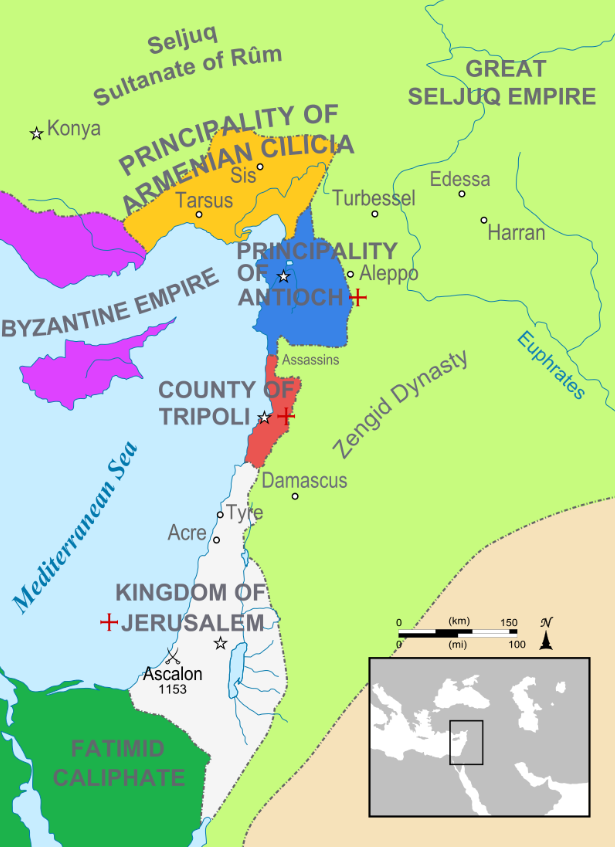
Crusader States and surrounding states in 1165 CE
(Wikipedia - MamMaster and Richardprins - CC BY-SA 3.0).
On Monday, around daybreak on 29 June 1170 CE, the people of Aleppo awoke to a terrifying earthquake that killed many and drove survivors to camp outside the city amid continuing aftershocks. Other towns suffered destruction1, but none appeared to fare as badly as Aleppo—at least according to the chroniclers who described it. These accounts span multiple traditions: Western authors writing in Latin or Vulgar French, Muslim scholars in Arabic, and Syriac Christian writers from the region. Several of the reports are contemporaneous.
The date — 29 June 1170 CE — is firmly established, attested by both contemporary and later sources using different calendars that converge on this same day. Several writers — William of Tyre, Bar Hebraeus, and Kemal ad-Din (= Ibn al-ʿAdim) — state that the earthquake struck near sunrise. Others — Ibn al-Athir, Sibt ibn al-Jawzi, Abu Shama, and Kemal ad-Din — describe multiple shocks, often using the plural “earthquakes.” As noted by Guidoboni et al. (2004), this may indicate more than one event. They proposed possible northern and southern epicenters but observed that the proximity of the damaged sites makes it difficult to assign destruction to distinct quakes. No clear temporal markers exist in the sources to separate events, suggesting that if two occurred, they likely followed each other closely and shared nearby epicenters.
At the al-Harif aqueduct in Syria, Sbeinati et al. (2010) identified a seismic event (Event Z) which dated to 1010–1210 CE2, as probably the 1170 earthquake. This would imply rupture of the ≈90 km Missyaf fault segment, consistent with reported damage distributions. They estimated MW 7.3–7.5, assuming the whole segment broke without propagation beyond it. Hough and Avni (2011) estimated M ≈ 6.6, while Ambraseys (2009) gave MS 7.3 (±0.3). Guidoboni et al. (2004) calculated MW ≈ 7.7 (±0.22) for a single event, noting that if two occurred, their macroseismic effects would be indistinguishable and overlapping, yielding excessive uncertainty in seismic parameters.
Two sources — William of Tyre and Chronica Universalis Senonensis — suggest that Palestine and Jerusalem trembled but escaped serious damage. Several authors described aftershocks lasting for months, some claiming up to four. A few embellished accounts also mention earth fissures3 in various places.